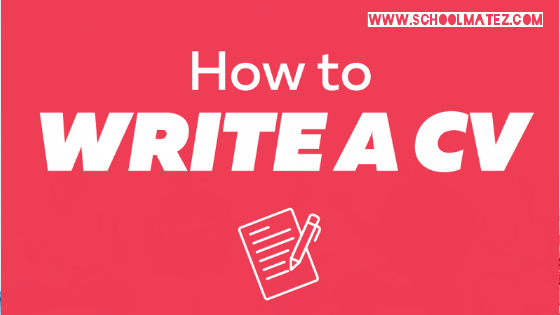Cover letters add context to your CV and allow you to sell your skills and experience to potential employers. To make the best of this opportunity discover how to write a cover letter and take a look at our examples for inspiration
What is a cover letter?
A cover letter is a document sent alongside your CV when applying for jobs. It acts as a personal introduction and helps to sell your application. A cover letter is necessary as it gives you the chance to explain to an employer why you’re the best candidate for the job. You do this by highlighting relevant skills and experience; therefore you should always write your cover letter with the position you’re applying for in mind.
Not to be confused with personal statements for your CV, cover letters should complement your CV but not duplicate it. The general consensus among recruiters when it comes to the length of these documents is the shorter the better. Typically three to five short paragraphs, cover letters should not exceed one A4 page.
If sending electronically, put the text in the body of the email rather than as an attachment, to avoid it being detected by spam filters.
Applications should always include a cover letter unless the job advert instructs you differently.
How to write a cover letter
Before writing your cover letter it’s important that you do your research. While reading the job description thoroughly is essential, it’s often not enough. To help you craft a successful cover letter discover more about:
- who will be reading your cover letter
- the organisation and its culture
- the industry it operates in and any relevant news
- company competitors and market position.
- the organisations goals over the next five years.
When writing your cover letter keep it brief, while making sure it emphasises your suitability for the job. It can be broken down into the following sections:
- First paragraph – The opening statement should set out why you’re writing the letter. Begin by stating the position you’re applying for, where you saw it advertised and when you are available to start.
- Second paragraph – Highlight relevant experience and demonstrate how your skills match the specific requirements of the job description. Summarise any additional strengths and explain how these could benefit the company.
- Third paragraph – Cover why you’re suitable for the job, what attracted you to this type of work, why you’re interested in working for the company and what you can offer the organisation. This is a good opportunity to show off your knowledge of the company.
- Last paragraph – Use the closing paragraph to round up your letter. Reiterate your interest in the role and indicate your desire for a personal interview. Now is the time to mention any unavailable dates.
Once finished read through the document and cut out any unnecessary words and sentences. Don’t fill up space by repeating what’s already covered in your CV. As a general rule only mention your current salary or salary expectations if the employer has specifically asked you to do so in the job description. If you’re asked to include this information put it between the third and last paragraphs.
Unless the job advert states differently (for example, it may ask you to provide your CV and cover letter as a Word document) save with a .PDF file extension to make sure it can be opened and read on any machine. Windows PCs and Macs don’t always work in harmony – Windows use a .docx file extension and Macs .pages but if the recruiter uses the opposite system they may not be able to open your file. Using a .PDF file extension should solve this.
If you need help with your CV take a look at how to write a CV.
How to address a cover letter
Always try and address your cover letter directly to the person who will be reading it. Bear in mind that you’re more likely to receive a reply if you send it to the right person.
If you’re struggling to find a named contact you can use a general greeting such as:
- DearSir/Madam
- Dear Hiring manager
- Dear Human resources director.
However, general greetings should only be used once you have exhausted methods of finding a named contact.
How to sign off
How you sign off your cover letter depends on how you addressed it. If you include a named contact, sign off ‘Yours sincerely’. If you use a general greeting, finish with ‘Yours faithfully’.
Example cover letters
- Sample cover letter – Used to highlight your skills and experience and to express your suitability and passion for the job, cover letters are used to encourage recruiters to look at your CV. Attention to detail is crucial and spelling, grammar and formatting needs to be spot on. Take a look at our sample cover letter for inspiration on how to craft the perfect document.
- Speculative cover letter – These can sometimes be an effective method of creating an opportunity. To ensure that speculative cover letters are successful you’ll need to do your research on the company you’re applying to. Using our cover letter template, discover what to include in speculative applications.
- Cover letter by a Masters graduate – You probably embarked on a Masters to expand your subject knowledge, gain industry contacts and improve your job prospects but to really make it work you need to know how to sell your postgraduate qualification to employers.
- Cover letter for a jobseeker with no experience – It can be tough applying for a job with no experience but our example cover letter shows you how to promote yourself to an employer if you haven’t got any directly related work experience.
- Explaining a gap in your CV – Knowing how to navigate around large gaps in your CV can be tricky but it’s a mistake to try and gloss over them. Your cover letter is the perfect place to explain these gaps in your employment history to potential employers. Take a look at our sample cover letter to find out how to go about it.
- Cover letter for changing career – Find out how to explain a change of direction in our example cover letter for career changers. You’ll need to cover why you want to change career (briefly – save the nitty-gritty for your interview) and relate your past experience and wealth of skills to the industry/job you’re applying to.
- Cover letter by an international graduate – If you’d like to expand your horizons by working abroad, take a look at our cover letter of an international student applying for a job in the UK and apply these principles to the country of your choice.
- Disclosing a disability – Just like your gender, marital status and dependants your disability doesn’t affect your ability to do a job and you’re not legally required to disclose it on your CV or in your cover letter. However, if you would like to disclose a disability to outline any adjustments you may need, this sample cover letter will show you how.
- Internship cover letter – To set yourself above the competition you need to successfully sell your relevant skills and experience while conveying your passion for the role. As well as explaining to employers what the opportunity could do for you you’ll need to communicate what you could do for the company. Discover how to craft the perfect application for a formal internship with our internship cover letter template.
- Apprenticeship cover letter – Apprenticeships are an increasingly popular route into work, as well as a great alternative to university. Find out how to apply for these roles with our apprenticeship cover letter example.
For inspiration and guidance on crafting a CV see example CVs.
5 tips for the perfect cover letter
With employers often receiving lots of applications for each vacancy, you need to ensure that your cover letter makes a lasting impression for the right reasons. Here are some tips to increase your chances of success:
- Tailor to the organisation – You should rewrite your cover letter every time you apply for a position in order to target the company. Sending out a generic letter for all applications rarely yields positive results and recruiters can spot your lack of time and effort from a mile away.
- Format – Presentation is important so you’ll need to format your cover letter properly. Make sure the document is as uncluttered as possible, use the same font and size as you use in your CV and if you’re sending it through the post or handing it in use good quality plain white paper to print it on.
- Identify your USPs – They’re your unique selling points. Be positive about what you have to offer and clearly outline how your skills and experience meet those requested in the job description. Demonstrate why you’re the perfect candidate.
- Include examples – Back up the claims in your cover letter with real evidence or examples that show how and when you’ve used your skills and experience.
If you’re a student or recent graduate you can make an appointment with your university’s careers and employability service to access further help when writing your cover letter. You’ll be able to talk with specially-trained advisers, get advice on what to include and have a professional eye look over your application before sending.
To make sure you don’t trip up read about the 5 things to avoid when writing a cover letter.
Find out more
- Take a look at more example CVs.
- Discover how to avoid the top 7 CV mistakes








[…] for you to show the employer why you are the best candidate for the job, kind of like a cover letter. You’ll need to relate your skills directly to those outlined in the job […]